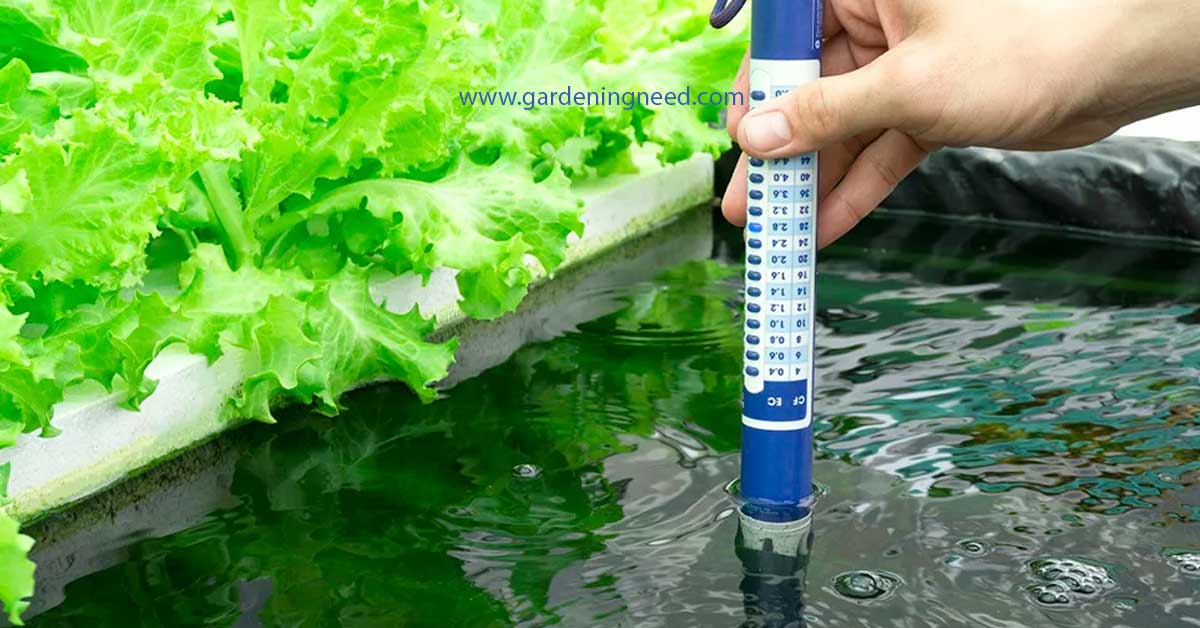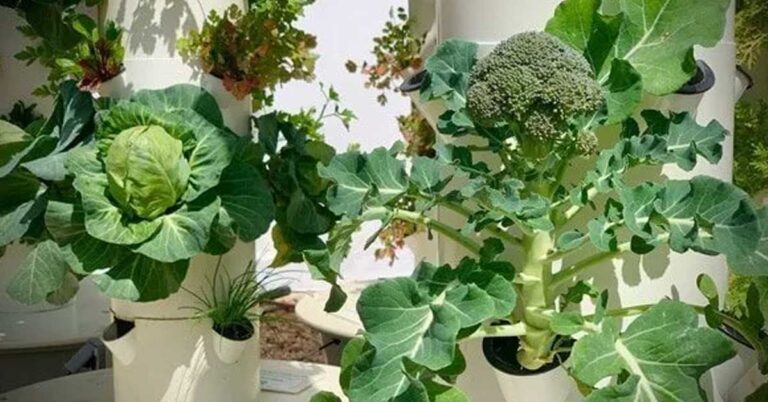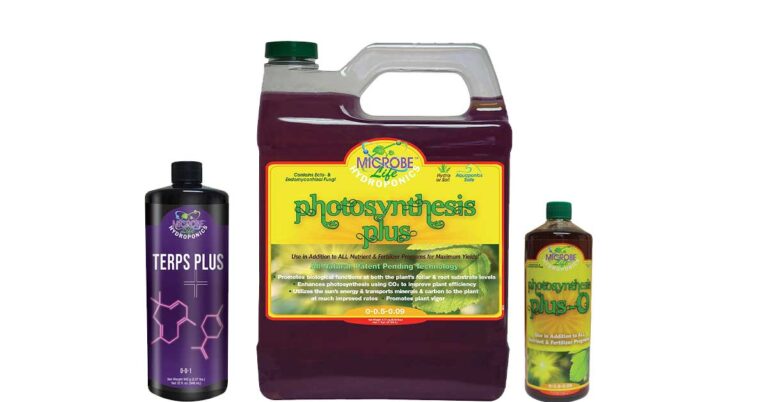Hydroponics EC Levels
Hydroponics is a method of growing plants without soil, using mineral nutrient solutions in a water solvent. The nutrient solution must be carefully monitored to ensure the correct balance of essential elements, such as nitrogen, phosphorus, and potassium, are present. Monitoring the electrical conductivity (EC) of the nutrient solution is an important part of hydroponic gardening, as it helps to determine the concentration of nutrients in the solution. Knowing the EC level of the nutrient solution helps hydroponic gardeners ensure their plants are receiving the correct amount of nutrients for optimal growth.
Understanding Hydroponic EC Levels: What They Mean and How to Measure Them
Understanding Hydroponic EC Levels is essential for achieving optimal plant growth in a hydroponic system. EC stands for electrical conductivity, and it is a measure of the amount of nutrients in a hydroponic solution. The easiest way to measure EC is with an EC meter, which is a device that measures the electrical current passing through a solution. EC readings are also referred to as TDS (total dissolved solids) readings.
The EC of a hydroponic solution is affected by several environmental factors, including the amount of nutrients, the pH levels, the water temperature, and the mineral salts in the water. A higher EC indicates a higher concentration of nutrients, while a lower EC indicates a lower concentration of nutrients. EC measurements can also be converted to a conductivity factor, which is a measure of the concentration of nutrients in the solution.
The EC of a hydroponic solution is an important factor in achieving optimal plant growth. The EC should be monitored on a regular basis to ensure that the nutrient levels are appropriate for the type of plants being grown. For young plants, a lower EC is generally recommended, while for mature plants, a higher EC is generally recommended. It is also important to keep the pH of the nutrient solution in the optimal range for the specific plants being grown.
It is also important to have a good understanding of what EC levels are best for different plant species. Different plants have different nutritional needs, and the EC of the nutrient solution should be adjusted accordingly. For example, tomato yield is usually higher when the EC is in the optimum range, while high EC levels can lead to nutrient toxicity in some plants.
In addition to measuring the EC of the nutrient solution, it is also important to measure the pH of the nutrient solution on a regular basis. The pH of the nutrient solution plays an important role in the uptake of nutrients by the plant roots. The pH should be kept in the optimal range for the specific plants being grown.
Overall, having a good understanding of hydroponic EC levels is essential for achieving optimal plant growth in a hydroponic system. It is important to monitor the EC and pH of the nutrient solution on a regular basis, and to adjust the nutrient levels accordingly. With a good understanding of what EC levels are best for different plant species, it is possible to achieve healthy plants and high yields in a hydroponic system.
Optimizing EC Levels for Maximum Plant Growth in Hydroponic Systems
Optimizing EC levels for maximum plant growth in hydroponic systems is an important factor in successful hydroponic gardening. EC stands for electrical conductivity, and is a measure of the amount of nutrients in a hydroponic solution. EC readings are taken with an EC meter or a TDS (total dissolved solids) meter. EC readings can be used to measure the pH levels, the amount of nutrients, and the purity of the water.
When it comes to EC levels, the general rule is that higher EC readings mean more nutrients in the water, while lower EC readings mean less nutrients. Pure water has an EC of 0, while tap water can have an EC of anywhere from 0.5 to 2.5 depending on the conductivity factor. Distilled water has an EC of 0.5, while the concentration of nutrients in a hydroponic nutrient solution can range from 1.0 to 4.0.
It is important to have a good understanding of what EC levels are optimal for different types of plants, and at what stage of growth. A digital EC meter is the easiest way to measure EC levels, and it is important to take regular readings to ensure that the EC levels are in the optimal range for maximum plant growth.
The pH of the nutrient solution is also an important factor when it comes to optimizing EC levels for maximum plant growth. The pH of the solution should be in the ideal range for the specific plants being grown. For example, tomatoes prefer a pH of 5.5 to 6.5, while other crops such as lettuce and spinach prefer a pH of 6.0 to 6.5.
In addition to EC and pH levels, environmental factors such as light intensity, water temperature, and average daily water loss can also play an important role in optimizing EC levels for maximum plant growth. It is also important to have a good understanding of the nutrient ratios and the strength of the nutrient solution, as different results can be obtained depending on the type of plants being grown.
In general, higher EC levels are better for mature plants, while lower EC levels are better for young plants. It is also important to be aware of the potential for nutrient toxicity, as too much salt can be harmful to plants. The optimum EC range for hydroponic crops is usually between 1.2 and 2.2, although this can vary depending on the type of plants being grown.
Overall, optimizing EC levels for maximum plant growth in hydroponic systems is an important factor in successful hydroponic gardening. It is important to have a good understanding of what EC levels are optimal for different types of plants, and to take regular readings to ensure that the EC levels are in the optimal range for maximum plant growth.
Troubleshooting Common EC Level Issues in Hydroponic Systems
Troubleshooting common EC level issues in hydroponic systems is essential for achieving optimal plant growth. EC stands for electrical conductivity, which is a measure of the amount of nutrients in a hydroponic solution. EC is measured using an EC meter, and is expressed in units of milliSiemens per centimeter (mS/cm). EC readings are often confused with TDS (total dissolved solids) readings, which measure the concentration of all dissolved solids in a solution, including minerals and other salts.
In hydroponic systems, EC is an important factor in determining the amount of nutrients available to the plants. If the EC is too high, it can indicate that there is too much nutrient in the solution, which can lead to nutrient toxicity and poor plant growth. If the EC is too low, it can indicate that there is not enough nutrient in the solution, which can lead to nutrient deficiencies and poor plant growth.
The easiest way to adjust the EC level in a hydroponic system is to use pure water or distilled water to dilute the nutrient solution. Tap water can also be used, but it may contain minerals and other salts that can affect the EC level. If tap water is used, it is important to check the EC level regularly to ensure that it is within the desired range.
The EC level can also be affected by environmental factors such as water temperature, light intensity, and air temperature. Additionally, the EC level can be affected by the concentration of nutrients in the hydroponic solution, the type of plants being grown, and the stage of growth.
To accurately measure the EC level, it is important to use a digital meter that is specifically designed for hydroponic systems. It is also important to understand the conversion factor between EC and the concentration of nutrients in the solution. This conversion factor varies depending on the type of nutrient salts used in the solution.
Understanding the EC level of a hydroponic system is essential for achieving optimal plant growth. EC levels that are too high or too low can lead to nutrient deficiencies or toxicity, which can have a negative impact on the health and yield of hydroponic crops. It is important to monitor the EC level on a regular basis and adjust the nutrient solution accordingly. With a good understanding of what EC is and how it affects hydroponic systems, it is possible to achieve healthy plants and high yields.
The Role of EC Levels in Hydroponic Nutrient Solutions
Electrical conductivity (EC) is an important factor in hydroponic nutrient solutions. EC is measured with an EC meter and is expressed in milliSiemens per centimeter (mS/cm). EC readings are used to measure the amount of nutrients in a hydroponic system. EC is often confused with TDS (total dissolved solids) meters, but they measure different things. EC measures the concentration of nutrients in the solution, while TDS measures the amount of dissolved solids in the solution.
The EC of a hydroponic nutrient solution can vary depending on the type of water used. Pure water has an EC of 0 mS/cm, while tap water can have a higher EC. Distilled water and reverse osmosis water have a lower EC. The EC of a hydroponic solution is also affected by the concentration of nutrients, environmental factors, and the water temperature.
The EC of a hydroponic solution is an important factor in determining the amount of nutrients available to the plants. The EC of a nutrient solution can be measured with an EC meter or a digital meter. The EC measurements are then used to determine the concentration of nutrients in the solution. A higher EC indicates a higher concentration of nutrients, while a lower EC indicates a lower concentration of nutrients.
The EC of a hydroponic solution is also important for determining the pH value of the solution. The pH of the nutrient solution is an important factor in determining the nutritional value of the solution and the health of the plants. The pH should be monitored on a regular basis to ensure optimal plant growth.
The EC of a hydroponic solution is also important for determining the amount of nutrients available to the plants. The EC of a nutrient solution can vary depending on the type of plants being grown, the stage of growth, and the environmental factors. The EC of a nutrient solution should be monitored on a regular basis to ensure that the plants are receiving enough nutrients.
The EC of a hydroponic solution is an important factor in determining the nutritional value of the solution and the health of the plants. It is also important for determining the amount of nutrients available to the plants. By monitoring the EC of a hydroponic solution on a regular basis, growers can ensure that their plants are receiving the optimal amount of nutrients for healthy growth and development.
Adjusting EC Levels for Different Types
Adjusting EC Levels for Different Types of Hydroponic Systems is an important factor for optimal plant growth. EC stands for Electrical Conductivity and is a measure of the amount of nutrients present in a hydroponic nutrient solution. It is measured in units of milliSiemens per centimeter (mS/cm). EC readings are used to determine the concentration of nutrients in a hydroponic solution, and can be measured using an EC meter, TDS meter, or pH meter.
The EC of a hydroponic solution is affected by several environmental factors, such as the amount of nutrients present, the pH of the nutrient solution, the water temperature, and the mineral salts present in the water. In order to ensure that the nutrient solution is at the optimal EC level for the type of plants being grown, it is important to understand how these factors affect the EC.
The easiest way to adjust the EC of a hydroponic solution is to use pure water, such as distilled or reverse osmosis water, to dilute the nutrient solution. This will result in a lower EC, as the pure water contains no nutrient salts. If a higher EC is desired, tap water can be used to increase the concentration of nutrients in the solution. However, it is important to note that tap water contains a variety of mineral salts, and so the EC will vary depending on the type of tap water used.
Another way to adjust the EC of a hydroponic solution is to use a conversion factor. This factor is used to calculate the EC of a solution based on the amount of nutrients present. The conversion factor is calculated by dividing the concentration of nutrients in the solution by the amount of water used. For example, if the concentration of nutrients is 10 ppm and the amount of water used is 1 liter, the conversion factor would be 10/1, or 10.
It is important to understand that EC measurements are not an exact science, and can vary depending on the type of hydroponic system being used. Therefore, it is important to regularly measure the EC of the nutrient solution and adjust it accordingly. This is especially important for hydroponic crops, as the EC of the nutrient solution can have a significant impact on the yield of the crop.
Finally, it is important to understand that EC measurements are only one part of the equation when it comes to providing the optimal environment for hydroponic plants. Other factors, such as light intensity, water temperature, and the pH of the nutrient solution, all play an important role in providing the best conditions for healthy plants. Therefore, it is important to have a good understanding of what EC levels are best for different types of plants, and to adjust the EC of the nutrient solution accordingly.
How to Maintain Stable EC Levels
Maintaining stable EC levels in hydroponic systems is essential for optimal plant growth. EC stands for electrical conductivity, which is a measure of the amount of nutrients in a hydroponic solution. An EC meter or TDS meter is used to measure the EC readings of a hydroponic solution. EC readings are important for understanding the concentration of nutrients in the hydroponic solution, as well as the pH levels of the solution.
When setting up a hydroponic system, it is important to use pure water or distilled water as the base for the hydroponic solution. Tap water should be avoided, as it can contain high levels of minerals and salts that can affect the EC readings. The amount of nutrients added to the hydroponic solution will determine the EC level. A higher EC level indicates a higher concentration of nutrients, while a lower EC level indicates a lower concentration of nutrients.
The EC of a hydroponic solution can be affected by a number of environmental factors, such as water temperature, light intensity, and air temperature. It is important to monitor the EC of the hydroponic solution on a regular basis to ensure that the nutrient levels are optimal for the type of plants being grown. The easiest way to monitor the EC of a hydroponic solution is to use a digital meter.
It is important to understand the conversion factor between EC and the concentration of nutrients in the hydroponic solution. This is because the EC readings can vary depending on the type of nutrients in the solution. For example, a solution with a higher concentration of nutrient salts will have a higher EC than a solution with a lower concentration of nutrient salts.
The pH of the nutrient solution also plays an important role in maintaining stable EC levels. A pH meter can be used to measure the pH of the nutrient solution. If the pH is too high, the EC of the solution will be higher than optimal, resulting in higher levels of nutrients in the solution. On the other hand, if the pH is too low, the EC of the solution will be lower than optimal, resulting in lower levels of nutrients in the solution.
By understanding the EC of a hydroponic solution and maintaining the EC levels within the optimal range, it is possible to achieve optimal plant growth. This is especially important for hydroponic crops such as tomatoes, which require a specific EC range for optimal vegetative growth and yield. It is also important to understand the nutrient ratios in the hydroponic solution, as too much or too little of certain nutrients can lead to nutrient toxicity or nutrient deficiencies.
Overall, understanding and maintaining stable EC levels in hydroponic systems is an important factor for achieving optimal plant growth. By monitoring the EC of the hydroponic solution on a regular basis and adjusting the nutrient levels accordingly, it is possible to ensure that the plants are receiving enough nutrients for healthy growth.
In conclusion, hydroponics is an efficient and sustainable way to grow plants without the need for soil. The EC levels in hydroponic systems are an important factor to consider, as they can affect the health of the plants. EC levels should be monitored regularly to ensure the plants are receiving the right amount of nutrients. By doing so, hydroponic growers can maximize their yields and produce healthy, high-quality plants.







